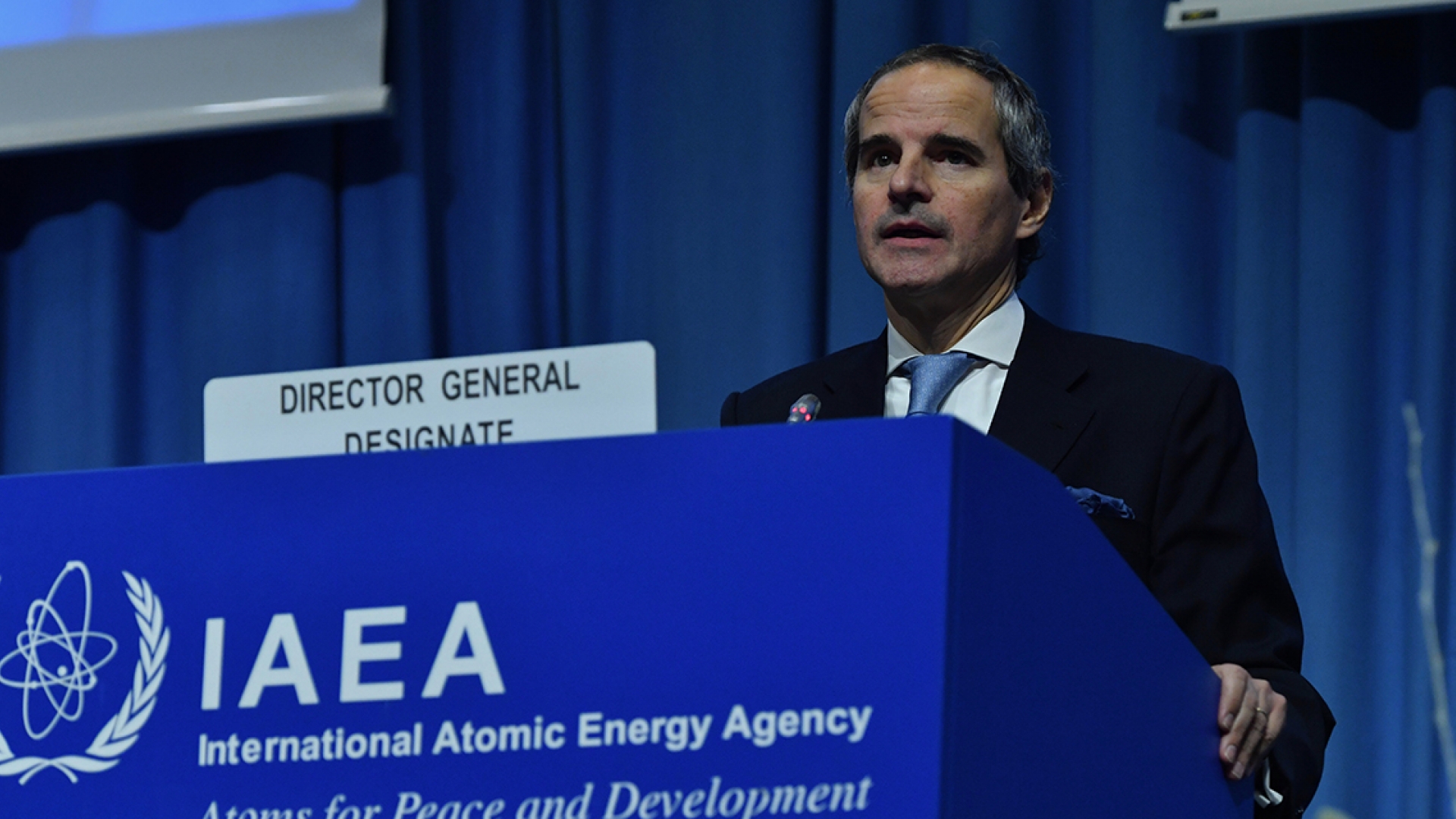This week, the International Atomic Energy Agency (IAEA) newest report on Iran’s nuclear program was leaked, showing a continued rise in Iran’s enriched uranium stockpile. Please see a breakdown and analysis of these events below:
New IAEA Report on Iran Show’s Continued Increase in Enriched Uranium Stockpile
- Amount is Now 12 Times the Amount Capped Under the JCPOA
- The newest IAEA report states that Iran’s uranium stockpiles increased to 2,442.9 kilograms this month, 12 times the stockpile limits under the JCPOA. This is a 337 kilogram increase from the last report in September, continuing the slow but steady reduction in Iran’s commitments under the JCPOA that started a year after the Trump administration withdrew from the nuclear deal in 2018.
- The report also verified that Iran continues to abide by all of the JCPOA’s verification and inspections measures, stating that the IAEA had “not observed any change in the level of cooperation by Iran.” It also showed that the rate at which Iran was accumulating uranium slowed in relation to previous periods over the last year.
- In addition, the agency’s report provided new updates on the investigation into undeclared nuclear activities that are believed to be connected to Iran’s pre-2003 nuclear program. In recent months, Iran permitted the IAEA access to two new sites, though the agency continues to press Iran for fulsome answers, noting that some of Iran’s explanations were “not technically credible.” The IAEA report urged a “full and prompt” explanation by Iran for the presence of low enriched uranium particles identified at an undeclared site that was inspected in February 2019.
- In reference to the investigation, Iran’s ambassador to the IAEA, Gharib Abadi said on Twitter that “despite technical differences among two sides, interactions are ongoing with a view to finalize the resolution of the matter, hence any hasty comment should be avoided.”
- Months after the publishing of the “nuclear archives” which sparked the investigation, IAEA Director General Rafael Grossi traveled to Iran to resolve questions on access to two sites that Iran had resisted. Once the IAEA and Iran struck an agreement on the parameters of the inspections, they released a joint statement on Aug. 26 that said, “Iran is voluntarily providing the IAEA with access to the two locations specified by the IAEA and facilitating the IAEA verification activities to resolve these issues.” The IAEA was then able to successfully collect samples from both sites between September and October.
- President Elect Joe Biden has signaled his willingness to reverse the Trump administration’s policies on Iran and has said he is prepared to take the U.S. back into the 2015 nuclear deal provided Iran returns into full compliance with that deal as a first step toward broader negotiations.
- Key Takeaways
-
- The IAEA report indicates that Iran has continued a deliberate approach to raise pressure on the U.S. and increase its nuclear leverage. While its increasing stockpile and slow cooperation with the IAEA on its investigation into past nuclear activities are concerning, Iran’s nuclear activities have accelerated as a direct result of Trump’s “maximum pressure” campaign.
- Over the last year and a half, Iran has taken calibrated, reversible steps away from the JCPOA to put pressure on the U.S. to rejoin the deal, not to destroy it. Recently, Iran has enhanced its cooperation with the IAEA investigation into past activities since the Trump administration’s efforts to dismantle the accord at the United Nations were thwarted. This remains the most compelling evidence to suggest that Iran would return to compliance with the deal in the near-term if President-Elect Biden chooses to do the same.
-
- The increase of Iran’s enriched uranium stockpile has dropped Iran’s potential breakout time – the time it would take Iran to accumulate sufficient fissile material for a single nuclear weapon, if it chose to do so – from more than a year under the JCPOA to a matter of 3-4 months. Still, given the intrusive inspections over Iran’s nuclear activities and slow but steady rate of accumulation, Iran’s activities do not appear to pose immediate proliferation risks.
-
- While Iran eventually provided the needed access to the two undeclared sites, they are dragging their feet on providing sufficient explanations of the material. This is concerning, but Abadi’s comments suggest that Iran is continuing work with the IAEA to resolve the issue.
- Iran may be strategically slowing down the process to resolve this issue as a potential fight over the JCPOA looms between the U.S. and Iran. That being said, Iran’s NPT commitments shouldn’t be a pawn in these discussions and both the U.S. and Iran ought to return to their commitments as swiftly as possible to stave off avoid an escalating nuclear showdown.
